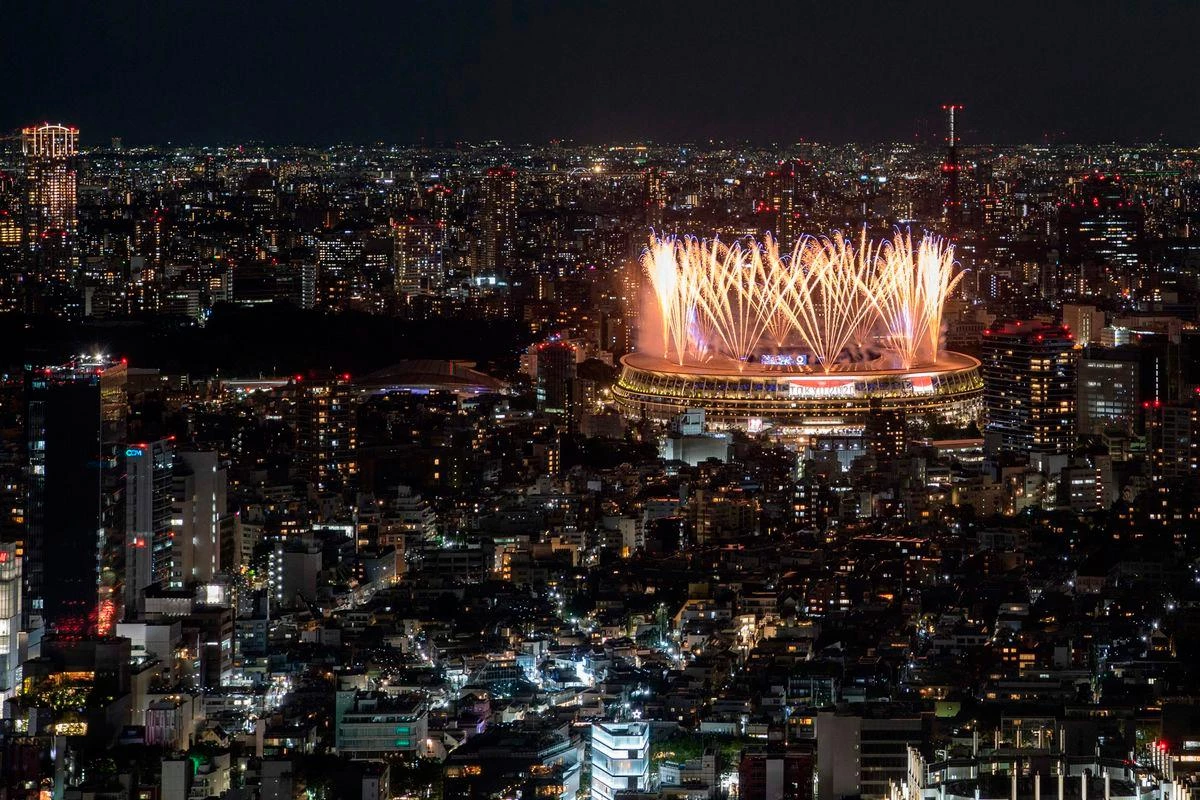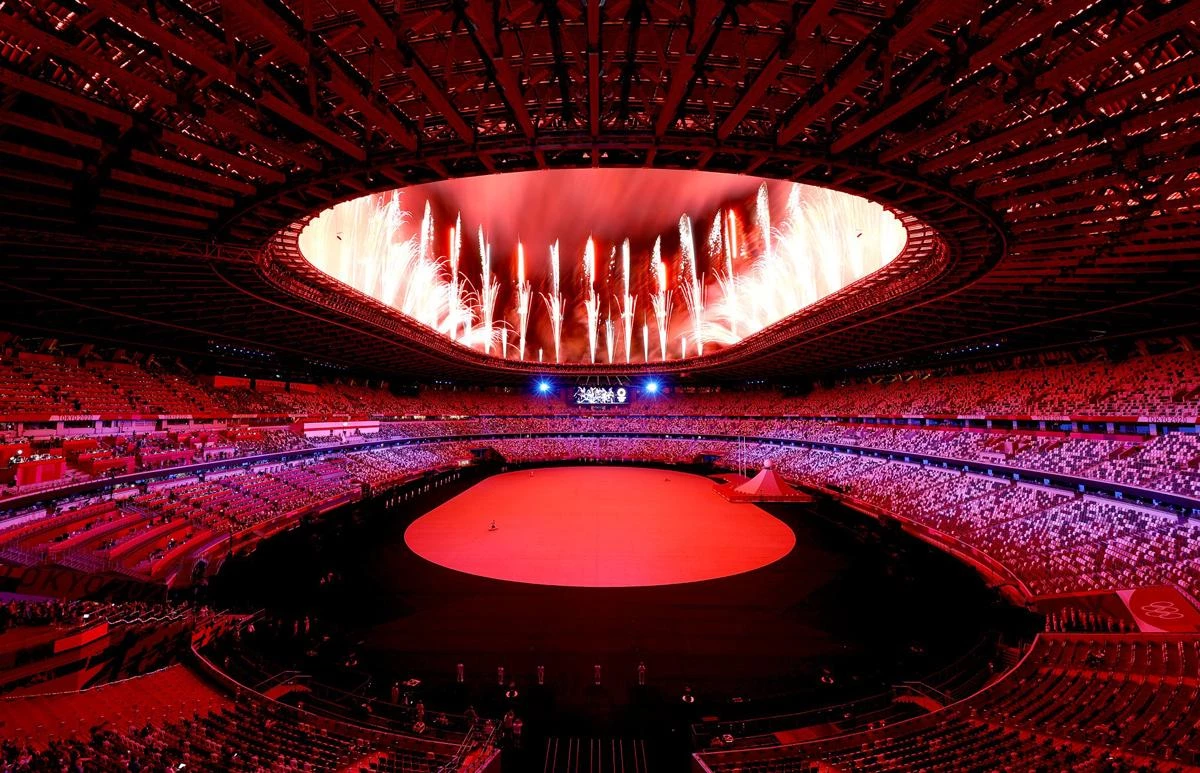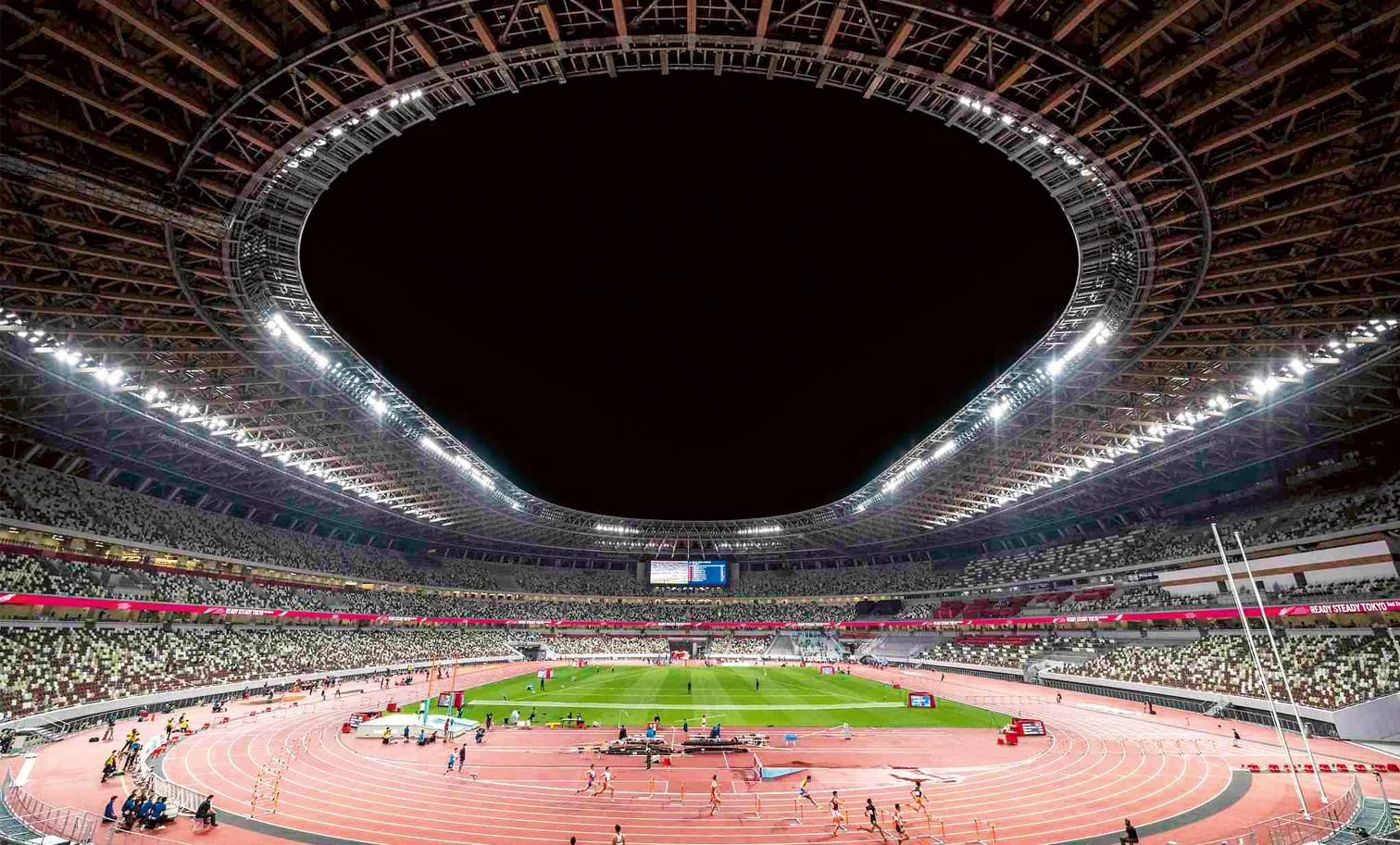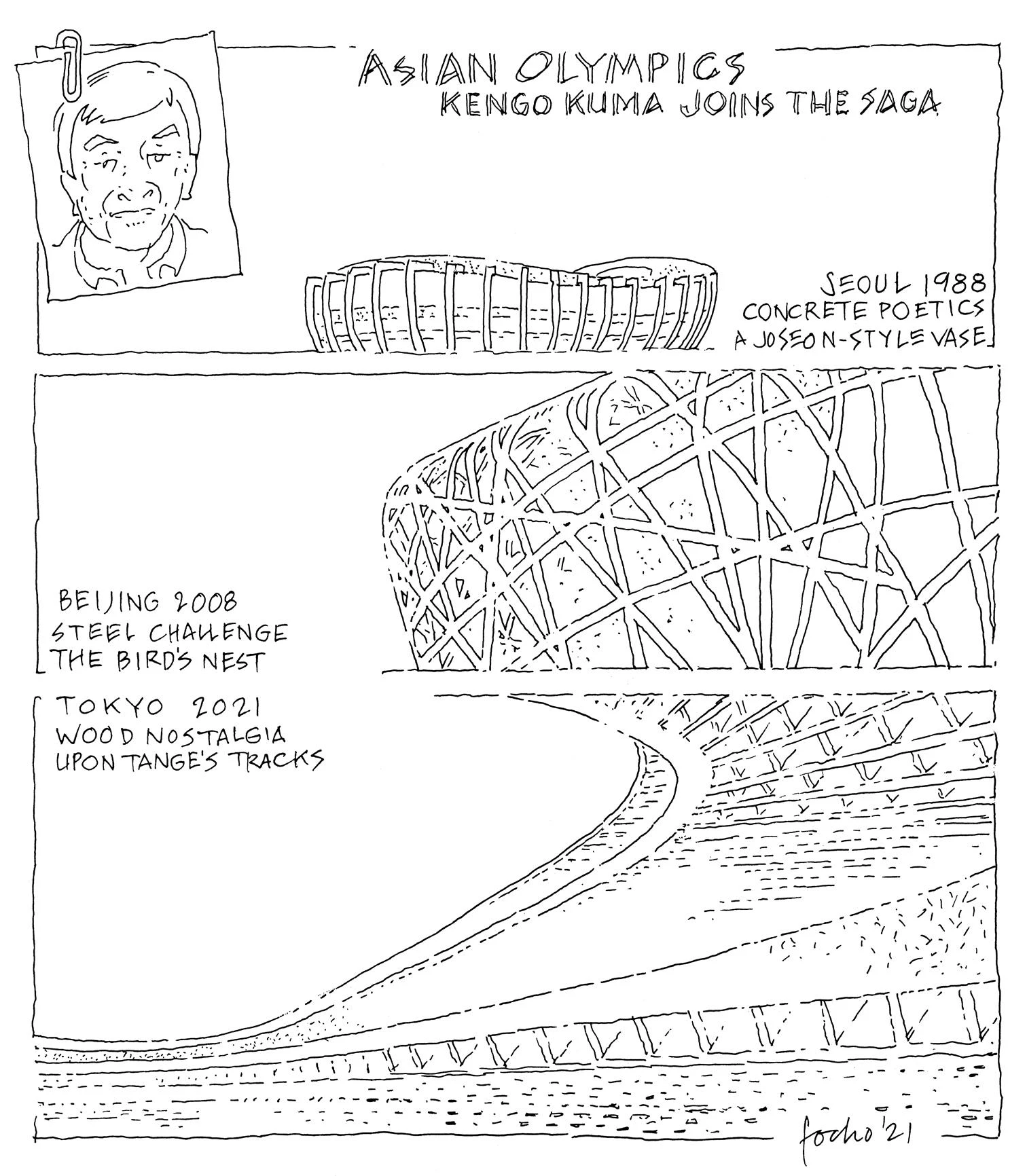
The opening ceremony for the 2020 Olympic Games in Tokyo has taken place in the Japan National Stadium, a work of Kengo Kuma, which presents a sophisticated composition of timber trusses and vegetation in its galleries.


Sport events mark our everyday existence so much that any disruption in their calendars, any rupture in their predictable frequency, is perceived as a statistic of catastrophe. Without going any further, a catastrophe like the Covid-19 pandemic, which managed to postpone the Olympiad, a competition which in modern times had hitherto only been interrupted by war. Now, more than a year since the delay was announced, the new Olympic stadium has officially opened, a building designed by Kengo Kuma which despite having been completed in time and praised for its sustainable character – it is a huge wooden basket, surpassing the metal nest of Beijing 2008 and the concrete vase of Seoul 1988 – has been wrapped in a three-pronged controversy. One polemic has to do with authorship, as an ideas competition first gave the commission to Zaha Hadid, but corporate pressure exerted by Japanese architects succeeded in handing it over to Kuma. Another involves the construction, given that the project necessitated tearing down the stadium which the great master Kenzo Tange raised for the 1964 Games. The third concerns the very rightness or wrongness of the building, and in general that of an event which a large number of Japanese citizens rejects because of the continued danger of the virus. So... good luck, Tokyo.
Kengo Kuma: National Stadium, Tokyo
Arquitectura Viva 236: Kengo Kuma






